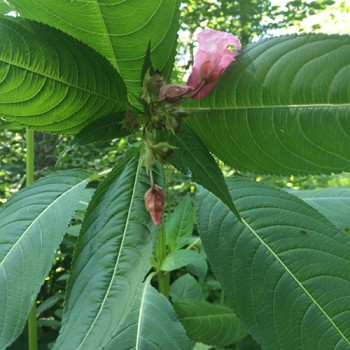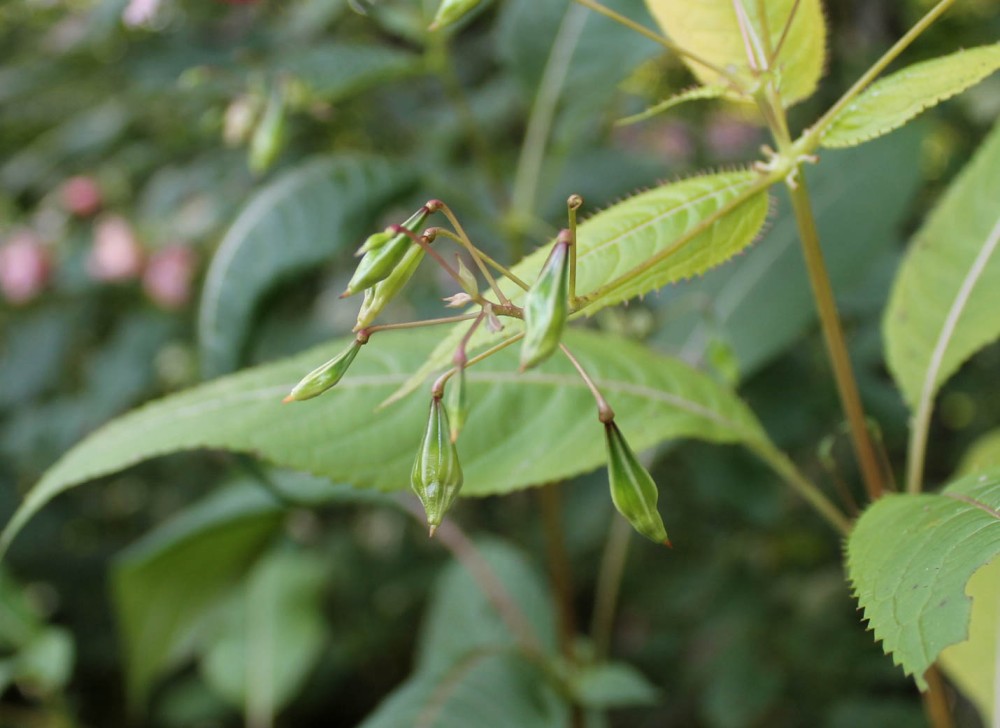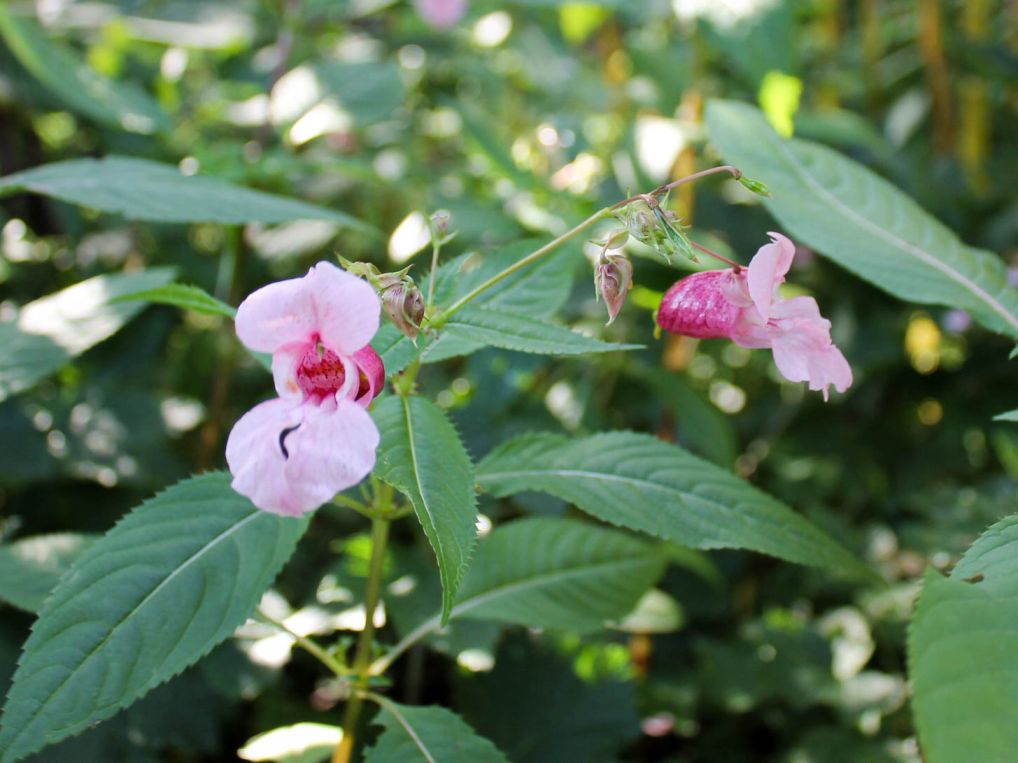Balsam plants, also known as Impatiens balsamina, are beautiful flowering annuals that produce vibrant, colorful blooms. With proper pollination, these plants can yield an abundant crop of flowers and seeds. This article provides a comprehensive guide on pollinating balsam plants to maximize your yield.
Overview of Balsam Plants
Balsam plants belong to the Balsaminaceae family and Impatiens genus. They are native to India and Southeast Asia and grow as annuals in USDA zones 10-11. These heat-loving plants thrive in warm weather and cannot tolerate frost.
Balsams grow rapidly to a height of 12-18 inches. Their lush green foliage is elliptical with a serrated margin. Balsams produce showy flowers in shades of pink, red, purple, violet, and white. The 1-2 inch flowers have five petals and resemble roses or camellias.
Importance of Pollination
Pollination is the transfer of pollen from the anthers (male part) to the stigma (female part) of flowers. This enables fertilization and production of seeds. For balsam plants, pollination is essential for
-
Flower production Without pollination the plants may not bloom well or produce deformed flowers.
-
Seed formation Pollen transfer results in fertilization and development of seeds inside the seed pods.
-
Fruit development: Pollination leads to the swelling of the ovary into fruits containing seeds.
-
Abundant yield: Effective pollination translates into more flowers and fruits, boosting the overall yield.
Pollination Methods
Balsam plants are primarily insect-pollinated in nature. But hand pollination can be useful when natural pollinators are scarce. The main methods are:
Insect Pollination
Bees, butterflies, and hummingbirds transfer pollen between balsam flowers as they forage for nectar. To promote insect pollination:
-
Plant nectar-rich flowers like zinnias, cosmos, pentas near the balsams.
-
Avoid applying pesticides while the plants are flowering.
-
Provide a shallow water source for the pollinators.
Hand Pollination
This involves manually transferring pollen from male to female flowers. Here’s a step-by-step guide:
-
Identify male and female flowers based on the reproductive parts.
-
Collect pollen from newly opened male flowers using a small brush.
-
Gently dab the pollen on to the stigma of female flowers.
-
Seal the pollinated flowers with small bags to prevent contamination.
-
Repeat every 2-3 days during the bloom period for thorough pollination.
Tips for Effective Pollination
Follow these useful tips to achieve successful pollination of your balsam plants:
-
Grow balsams in groups of at least 10 plants to improve pollination.
-
Plant in a sunny, sheltered location safe from strong winds.
-
Stake tall plants to prevent flowers from drooping and becoming inaccessible to pollinators.
-
Deadhead spent blooms to encourage continuous flowering.
-
Maintain optimal soil moisture and fertilize plants weekly.
-
Monitor for pests and diseases; treat promptly if detected.
Results of Effective Pollination
With adequate pollination, you can expect:
-
Up to 75% more flowers than unpollinated plants.
-
Improved quality and size of blooms.
-
Over 60% more seed pods than plants left to open pollinate naturally.
-
Larger, fully developed seed pods with higher seed count.
-
Extended flowering period, sometimes up to 2 weeks longer.
-
Earlier seed maturity by 7-10 days compared to plants lacking pollination.
-
Increased plant vigor and lifespan in a season.
Collecting and Storing Balsam Seeds
The seeds from hand-pollinated plants have higher viability rates. Follow these steps for collecting and saving the seeds:
-
Allow seed pods to mature and dry fully on the plant before harvesting.
-
Monitor the pods daily and harvest once they turn brown and papery.
-
Carefully crack open pods and remove seeds. Discard any immature seeds.
-
Spread out seeds in a single layer on paper towels and let dry for 1-2 weeks.
-
Place dried seeds in airtight containers and store in cool, dry place.
-
Label containers with plant name and harvest date.
-
Viability lasts for up to 3 years when stored properly.
Adequate pollination is key to getting a bountiful display of flowers and higher yield from balsam plants. Attract natural pollinators and supplement with hand pollination for best results. With a little effort, you can reap the rewards of vibrant blooms and abundant seeds for saving.

Himalayan Balsam (Impatiens glandulifera)French common name: Balsamine de l’Himalaya

Himalayan balsam is an invasive herbaceous plant that was initially introduced to North America as a garden ornamental.

When seed capsules mature and dry, they will explode when touched, shooting seeds in all directions!

Himalayan balsam flowers have a hooded shape that looks similar to a policemans helmet.
Order: EricalesFamily: Balsaminaceae
Did you know? Himalayan balsam closely resembles native jewelweed, another type of ‘touch-me-not’ plant.
Himalayan balsam is an invasive herbaceous plant that was initially introduced to North America as a garden ornamental. Himalayan balsam is widely distributed across Canada and can be found in eight provinces. Annual reproduction of this plant occurs in the summer, when the flowers are pollinated by insects. The insects may transfer pollen between flowers of conspecifics or from the same plant. Himalayan balsam typically grows to 1-3 m in height, with a soft green or red-tinged stem, and toothed leaves 5-23 cm long. The crushed foliage has a strong musty smell. Below the leaf stems the plant has glands that produce a sticky, sweet-smelling, nectar. Himalayan balsam flowers are pink, with a hooded shape, 3-4 cm tall and 2 cm broad; the flower shape has been compared to a policeman’s helmet. Himalayan balsam creates dense and tall stands that prevent native plants from establishing and reduce biodiversity. This plant is a prolific nectar producer and produces about 800 seeds per plant. This annual species can aggressively replace native perennial plants along riverbanks, leading to soil erosion.
Stem: The hollow, purple/reddish stem grow between 1-3 m tall.
Flowers: Himalayan balsam’s pink flowers are a key ID feature in the late growing season. The flowers have a hooded shape and look similar to a policeman’s helmet.
Leaves: This plant has long, toothed leaves 5-23 cm long.
Seeds: Himalayan balsam seed capsules will hold up to 16 seeds. This plant is a “touch-me-not” plant, which means that when its seed capsules mature and dry, they explode when touched. Seeds can spread up to 5 m from the parent plant.
Himalayan balsam is widely distributed across Canada and can be found all of provinces except Saskatchewan. It has naturalized in the United States.
Himalayan balsam produces dense stands, creating monocultures and reducing biodiversity by limiting nutrient and habitat availability and shading out native plants.
Himalayan balsam’s prolific nectar production draws pollinators away from other plants and is a main draw for gardeners wanting to attract more pollinating species. However, growing this plant should be avoided, as it spreads rapidly and will quickly overtake native species and reduce biodiversity.
One Himalayan balsam plant can produce over 800 seeds, allowing them to spread quickly – both naturally through wind and animal dispersal, and through human interference once the seed pods dry and explode when touched.
This species can aggressively replace native perennial plants along riverbanks, over time leading to soil erosion.
Mechanical control, by repeated cutting or mowing, is effective for large stands, but plants can regrow if the lower parts are left intact. Cutting the plant below the lowest node can help stop regeneration. Access to the sides of riverbanks can be difficult and inaccessible stands can quickly recolonise accessible cleared areas, so vigilance is needed if an area is to be effectively cleared.
Smaller infestations can be easily controlled by hand-pulling, as the root of Himalayan balsam is very shallow. However, management should only take place if there are no visible seeds, as disturbing the seeds can lead to further infestation in the disturbed soil. If management must take place when seeds are present (typically in late May), place a bag over the top of the plant to avoid further dispersal. As the seeds are not very robust and only last about 18 months, management can be completed in two years as long as proper disposal has occurred and all plants have been removed.
Once plants are removed, they should be placed in a black garbage bag and placed on an impermeable surface for up to 1 week. This will kill off any viable materials before disposal.
Hand Pollinate to Increase Yields and Reduce Blossom End Rot
FAQ
What is the best fertilizer for balsam?
Why is my balsam not flowering?
What pollinates impatiens balsamina?
Do balsam flowers need a lot of care?
Balsam flower pros include the plant’s ability to thrive in shady areas and moist woodland gardens. Once established, balsam flowers require very little care and they’ll bloom even during your worst summer heat waves. Just amend the soil with a little well-rotted manure or compost before planting, then keep the soil lightly moist but never soggy.
Are balsam flowers tough?
They’re tough plants. Balsam flower pros include the plant’s ability to thrive in shady areas and moist woodland gardens. Once established, balsam flowers require very little care and they’ll bloom even during your worst summer heat waves.
Why do herbalists use crushed balsam flowers?
Herbalists use crushed balsam flowers, often in poultice form, to relieve a number of ailments, including burns and scalds, warts, torn nails, snakebites and various inflammations of the skin. They’re tough plants. Balsam flower pros include the plant’s ability to thrive in shady areas and moist woodland gardens.
Are balsam flowers weedy?
In addition to its potential to become weedy in landscape, balsam plants are also prone to developing powdery mildew, which can affect nearby plantings. There are many reasons to grow balsam flowers in the garden, but it would be irresponsible not to forewarn others of their spreading nature.
